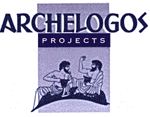

Method Page 2
The representation of philosophical arguments according to the Archelogos method has the advantage of allowing the user to study the arguments at different levels of justification.
The second part of the analysis, the Alternative Interpretations, is designed to capture received opinions in the history of the explanation of a passage regarding what that passage says. Unlike a collection of commentaries, or a monograph, here the area of focus is the passage rather than the theory of the ancient author. The primary interest of this section is to capture different contents ascribed to the passage under examination.
The Archelogos team has devised conventions for representing implicit premises, internal references, and types of arguments (infinite regress, reductio ad absurdum, circular arguments, quoted arguments, etc.). Also, the justification of the conclusion will be hidden from view on the screen, until it is brought to the fore.
The reason for this feature is that in this way the user may keep in view only the main conclusions of a passage or a work, without going into the detailed argumentation in them, but do so only at will where it is desired and to the degree that it is desired. For example, the user may decide to go only to a certain depth of justification of an argument, calling up the sub-arguments of so many levels below a top-conclusion, but not exhaust the whole justification of it. Thus a user may read a work or a chapter of a work only at the level of conclusions, or at the level of the important arguments, while avoiding the multitude of minute justifications of subordinate points, which often make the original text difficult to traverse.
Return to project home page